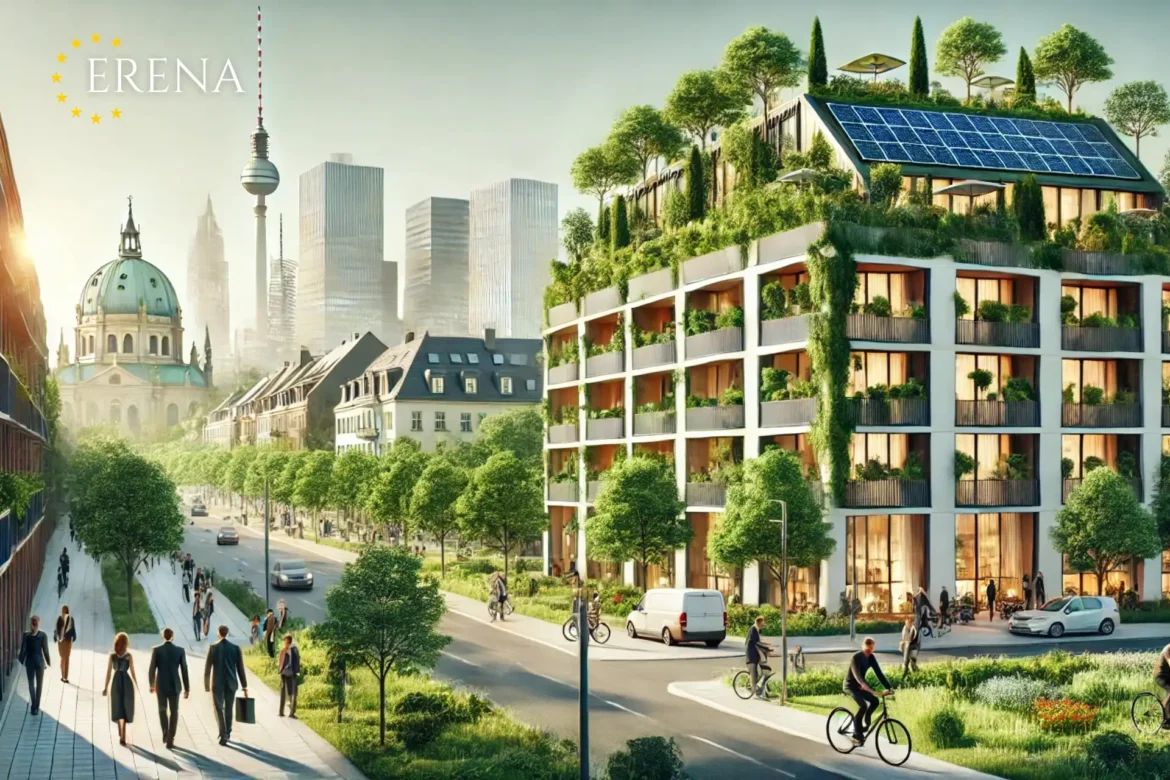Germany’s real estate market is embracing sustainability, with cities like Berlin, Munich, and Hamburg leading the way in green building projects. Driven by environmental goals, stricter regulations, and increasing consumer demand for eco-friendly properties, green real estate is rapidly gaining traction in Germany.
What’s Driving the Shift to Green Real Estate?
Green building certifications, such as the German Sustainable Building Council (DGNB), are becoming a major factor in property decisions. Certified buildings are not only more sustainable but also command higher prices, reflecting their long-term value.
Price Premium for Green Buildings:
- Berlin: Green-certified apartments are priced 10-15% higher than traditional ones in popular districts like Mitte and Prenzlauer Berg.
- Munich: Sustainability is a key factor, with a price hike of 15-20% for green apartments, especially in areas like Schwabing.
- Hamburg: Properties with green certifications see price increases of 12-18%, particularly in HafenCity.
Green Office Spaces on the Rise
Companies are increasingly seeking office spaces with green certifications to meet sustainability targets. These eco-friendly offices feature energy-efficient systems, waste management solutions, and environmentally conscious materials.
Green Office Space Prices:
- Berlin: Green office spaces range from €25 to €40 per square meter.
- Munich: In Munich, expect prices from €35 to €50 per square meter.
- Frankfurt: Prices for green office spaces range from €30 to €45 per square meter.
Key Features of Green Real Estate
- Energy Efficiency: Advanced insulation, solar panels, and energy-efficient systems are standard in green buildings.
- Sustainable Materials: Use of eco-friendly materials like recycled steel and bamboo helps minimize environmental impact.
- Water Conservation: Rainwater harvesting and low-flow fixtures are common in green buildings.
- Health & Well-being: Green buildings offer better air quality, natural lighting, and ergonomic designs for healthier living and working environments.
Challenges and Future Outlook
While green buildings often come with higher upfront costs, their long-term benefits, including lower energy bills and higher property values, make them an attractive investment. As the demand for eco-friendly properties continues to grow, the German market for green real estate is expected to expand, driven by both government incentives and increased public awareness of environmental issues.
Conclusion
Green real estate is reshaping Germany’s urban landscapes. With eco-friendly certifications boosting property values and creating healthier living and working spaces, sustainable buildings are becoming an essential part of Germany’s real estate future. As demand continues to rise, the green real estate boom is here to stay.

